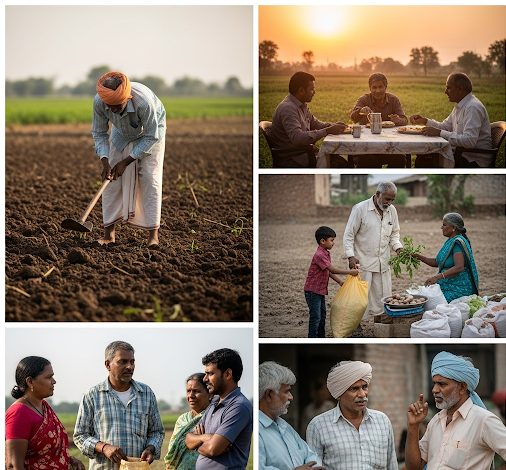India’s Forgotten Farmers: What’s Happening After the Protests?

Introduction
In late 2021, the world watched as tens of thousands of Indian farmers staged one of the largest protests in human history. Camped on Delhi’s borders for over a year, they demanded the repeal of three controversial farm laws. By November 2021, the government relented, withdrawing the laws and promising policy dialogues and better support systems.
But in 2025, a critical question looms: Were the farmers' demands really met, or were they just pacified?
Revisiting the Promises
The main demands during the protests included:
- Legal guarantee for Minimum Support Price (MSP)
- Withdrawal of the three farm laws
- Reduction in input costs and loan waivers
- Compensation for protest casualties
While the laws were officially repealed, a legal MSP guarantee was never implemented. Government procurement continues inconsistently, especially for crops beyond rice and wheat.
Many promises remain vague, buried in committee reports, or stuck in bureaucratic red tape.
Ground Realities in 2025
Punjab & Haryana
Punjab and Haryana, the epicenters of the protest, still rely heavily on wheat and rice procurement. Farmers say input costs have risen, but MSP hasn't kept pace with inflation.
"Diesel is expensive, fertilizers are erratic, and our profit margins are shrinking," says Baldev Singh, a farmer in Ludhiana.
The state's soil degradation and water table depletion have worsened, yet crop diversification efforts remain slow.
Maharashtra
Vidarbha and Marathwada continue to report agrarian distress and farmer suicides. Despite government schemes like PM-Kisan and crop insurance, awareness and claim success remain low.
Organizations like Shetkari Sanghatana have tried pushing for reforms, but farmer debt and climate unpredictability make farming unsustainable.
Internal link suggestion: Explore our piece on period poverty in rural India to understand overlapping challenges of rural neglect.
What Happened to MSP Reforms?
The Swaminathan Commission had recommended MSP at 50% above production cost. Yet as of 2025, this is not implemented in practice.
The government introduced an MSP App and expanded procurement centers digitally, but procurement varies sharply state-by-state. States like Chhattisgarh and Telangana see higher engagement, while others lag behind.
A lack of cold storage, supply chain infrastructure, and middlemen exploitation continue to erode farmer earnings.
Climate Crisis: An Unaddressed Multiplier
India's farmers now face erratic rainfall, unseasonal heatwaves, and flooding. Yet few receive timely crop loss compensation. Insurance penetration is low, and delays in claims disbursement are common.
In Maharashtra, nearly 42% of insured farmers reported delays or denial of claims in 2024.
Agro-ecological zones have shifted, but policies remain static. Few climate-resilient seeds are distributed, and even fewer farmers are trained in adaptive practices.
Are Farmer Unions Still Active?
Yes, but with challenges.
- Samyukt Kisan Morcha (SKM) remains the largest coalition.
- Protests continue at district and block levels, demanding MSP laws and debt relief.
- Youth-led agri-tech groups are emerging to push for innovation, but adoption is slow.
The national media's attention has waned, but ground-level mobilization continues, especially around elections.
Voices from the Field
"We were promised change. What we got was silence," says Manpreet Kaur, a second-generation farmer in Patiala.
"I participated in the protests. Now I'm struggling to pay for seeds. Nothing has changed," shares Rohit Pawar, cotton farmer in Nagpur.
The disillusionment is real, especially among the youth. Many are migrating to cities, leaving behind ancestral land.
What Needs to Happen Next
- Legislate MSP across crops
- Boost access to climate-resilient inputs and training
- Improve farmer grievance redressal mechanisms
- Empower women farmers with land rights and credit
- Invest in local agri-tech innovation hubs
Conclusion: Farmers Fought—and Are Still Waiting
The protests of 2020–21 were not just about laws; they were about dignity. In 2025, that dignity still feels deferred.
India cannot become a $5 trillion economy while ignoring the backbone of its food system. The voices from the fields, once loud on TV screens, now echo faintly in bureaucratic corridors.
Let us not forget those who feed us.
Have the promises been kept—or were farmers left behind?
Share this article. Tag a policymaker. Start a dialogue.
Because silence will not sow justice.



